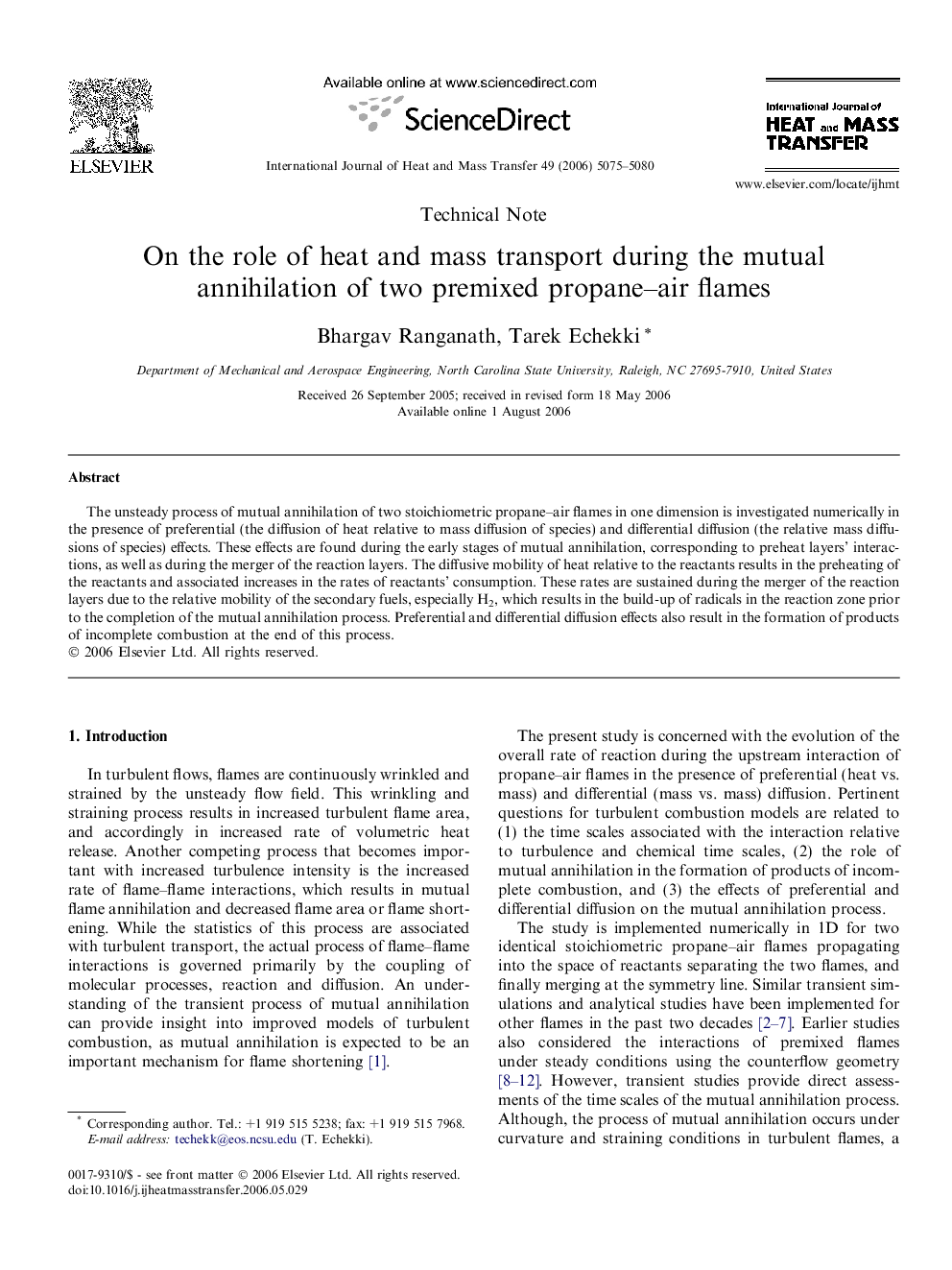| Article ID | Journal | Published Year | Pages | File Type |
|---|---|---|---|---|
| 663399 | International Journal of Heat and Mass Transfer | 2006 | 6 Pages |
Abstract
The unsteady process of mutual annihilation of two stoichiometric propane-air flames in one dimension is investigated numerically in the presence of preferential (the diffusion of heat relative to mass diffusion of species) and differential diffusion (the relative mass diffusions of species) effects. These effects are found during the early stages of mutual annihilation, corresponding to preheat layers' interactions, as well as during the merger of the reaction layers. The diffusive mobility of heat relative to the reactants results in the preheating of the reactants and associated increases in the rates of reactants' consumption. These rates are sustained during the merger of the reaction layers due to the relative mobility of the secondary fuels, especially H2, which results in the build-up of radicals in the reaction zone prior to the completion of the mutual annihilation process. Preferential and differential diffusion effects also result in the formation of products of incomplete combustion at the end of this process.
Related Topics
Physical Sciences and Engineering
Chemical Engineering
Fluid Flow and Transfer Processes
Authors
Bhargav Ranganath, Tarek Echekki,
